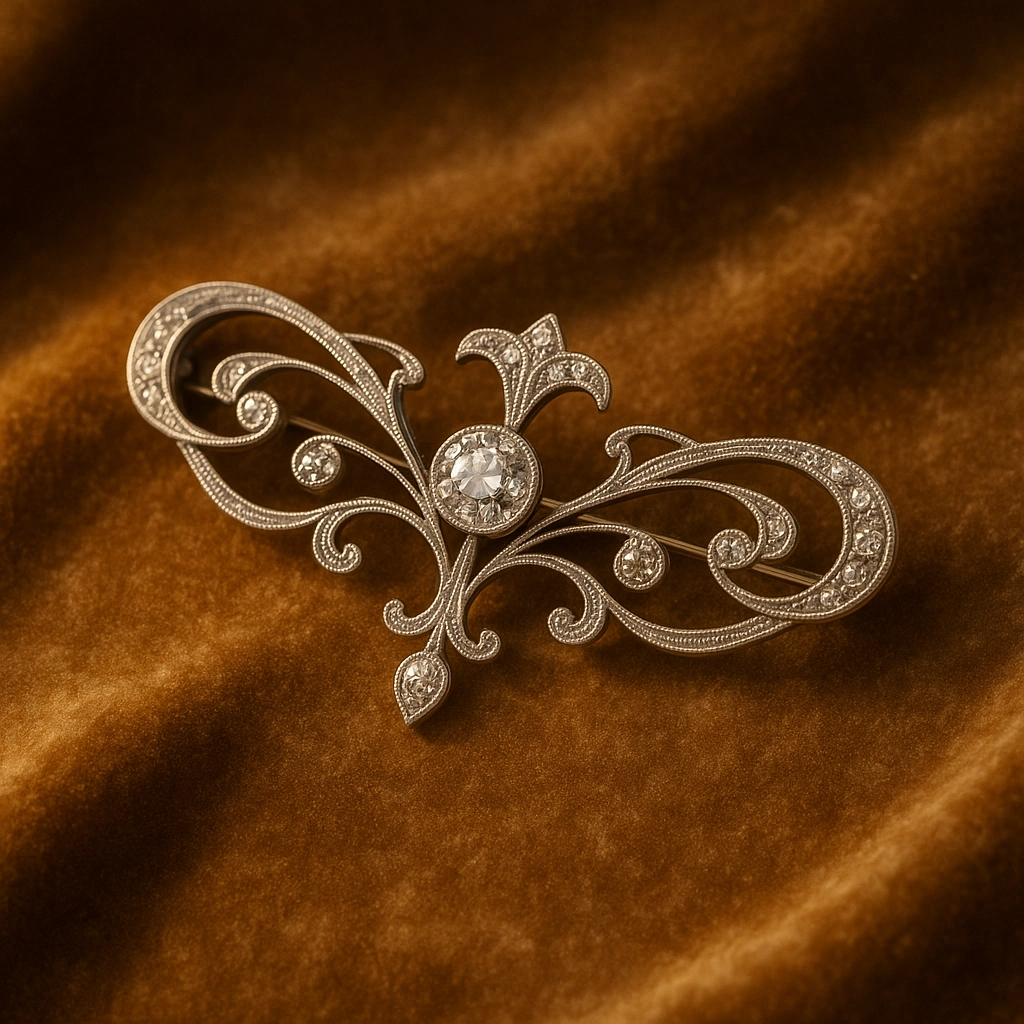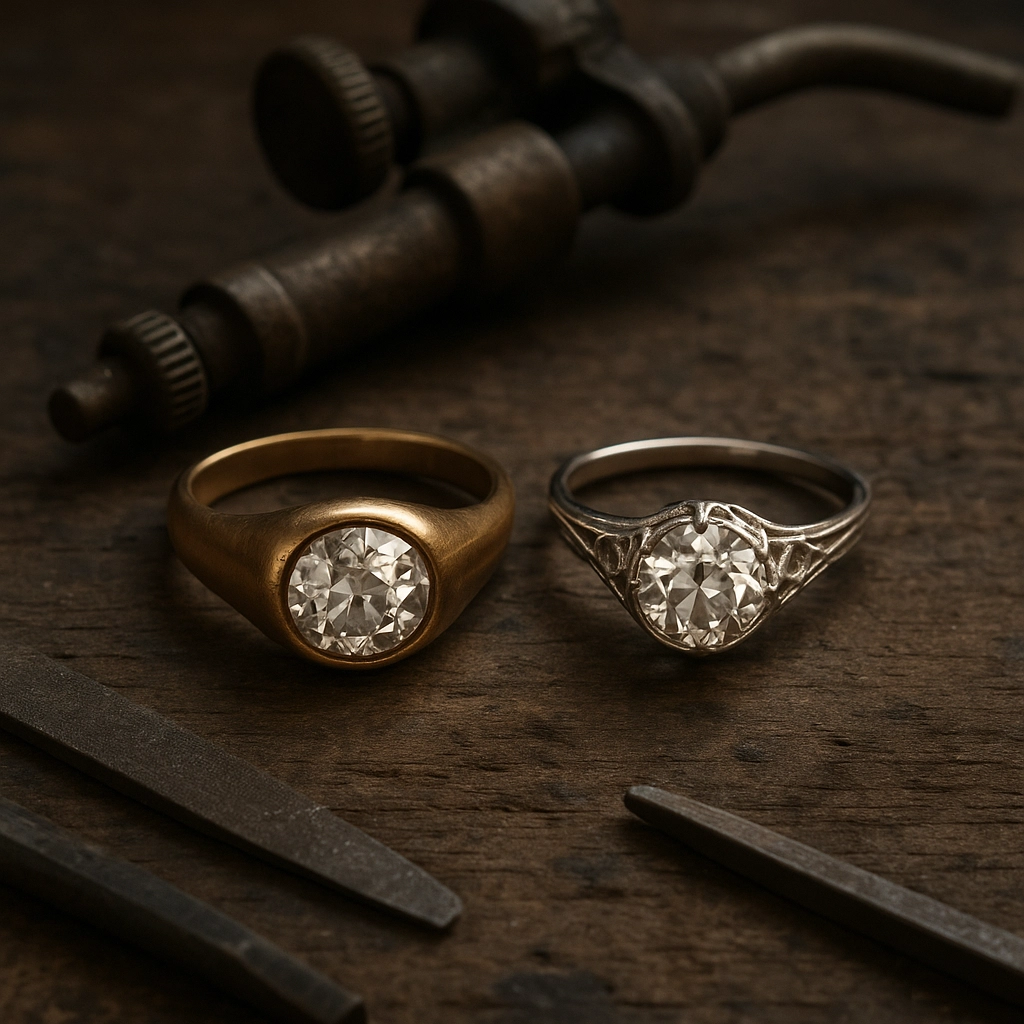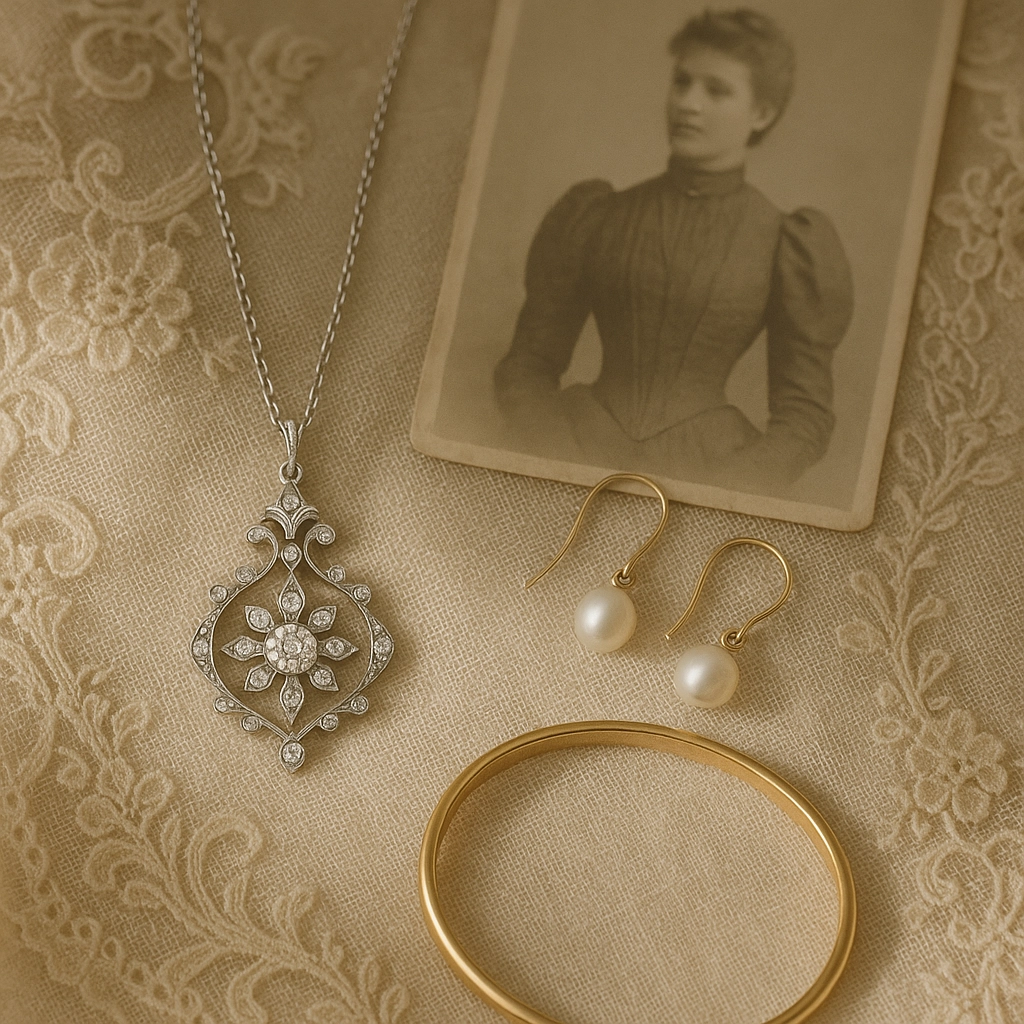Victorian Era Jewelry (1837–1901): Part 4 of 4
As we wrap up our journey through Victorian jewelry, I find myself fascinated by how dramatically jewelry evolved by the 1890s. If you've been following along with our series, you've seen how we moved from the heavy romantic symbolism of early Victorian pieces, through the elaborate mourning jewelry of the Grand period, and into the lighter aesthetic designs of the 1880s.
Now, in this final chapter, we're witnessing something remarkable—Victorian jewelry isn't just ending, it's transforming into something entirely new as we approach the dawn of the 20th century.
The Final Victorian Transformation (1890-1901)
By the 1890s, jewelry was becoming noticeably different. I'm talking about a real shift in how people wanted to present themselves. The heavy, symbolic pieces that had dominated earlier decades were giving way to something much more refined and, frankly, optimistic.
Take a look at your own jewelry box for a moment—do you have any pieces that feel light and airy, maybe with delicate diamond work or flowing lines? If so, you might be seeing echoes of this transitional period.
The late 1890s marked the beginning of what we now recognize as the "Edwardian aesthetic," even though Queen Victoria was still on the throne. Jewelers were already experimenting with platinum, though it wouldn't become widespread until after 1900. Diamond cutting techniques were improving dramatically, and suddenly, everyone wanted jewelry that sparkled and caught the light rather than making heavy symbolic statements.

Technology Changes Everything
I find it amazing how technological advances completely revolutionized jewelry during this period. According to Wikipedia, the invention of the oxyacetylene torch around 1895 made working with platinum possible for the first time. Before this, jewelers were limited by the metals they could manipulate—gold and silver were manageable, but platinum required temperatures they simply couldn't achieve.
This technological leap meant that by the early 1900s, jewelers could create incredibly delicate settings that seemed to barely hold diamonds and gemstones. It was like moving from heavy Victorian furniture to modern minimalist design—suddenly, less was definitely more.
Electric lighting was also becoming more common in wealthy homes and public spaces. Have you ever noticed how different your jewelry looks under incandescent bulbs versus natural light? Victorian jewelers certainly did. They began designing pieces specifically to sparkle under these new artificial lights, favoring diamonds and white metals that would catch and reflect the warm glow of electric bulbs.
The Rise of Diamond Focus
While colored gemstones had dominated much of the Victorian era—those deep garnets, turquoise, and colored gold combinations we've talked about—the 1890s saw diamonds taking center stage. It wasn't just about having diamonds; it was about how they were presented.
The old Victorian style would have set a diamond heavily, surrounded by symbolic motifs and often backed with colored foil to enhance the stone's appearance. But these late Victorian pieces started celebrating the diamond itself. Settings became more open, allowing light to pass through the stones from all angles.

I often wonder if this shift reflects the changing attitudes of the time. The heavy symbolism and mourning themes that had characterized so much Victorian jewelry were giving way to a sense of optimism about the new century. People were looking forward rather than dwelling on loss and remembrance.
Women's Independence and Jewelry Choices
Something else fascinating was happening during this period—women's roles in society were slowly evolving. While we were still decades away from women's suffrage, the "New Woman" of the 1890s had more independence than her earlier Victorian counterparts.
This social shift absolutely shows up in jewelry choices. Instead of heavy brooches that proclaimed marital status or mourning, women were choosing more personal pieces. Delicate pendant necklaces, simple diamond earrings, and graceful bracelets became popular. The jewelry was becoming less about sending messages to society and more about personal style and beauty.
Do you ever think about how your jewelry choices reflect your lifestyle? I imagine women in the 1890s were making similar considerations, choosing pieces that worked with their increasingly active lives rather than just formal social occasions.
The Birth of Modern Jewelry Design
What really strikes me about this transitional period is how many design elements from the 1890s still feel contemporary today. The preference for white metals, the emphasis on diamonds, the clean lines—these weren't just late Victorian trends, they were the foundation of modern jewelry design.

Jewelers like René Lalique were already experimenting with Art Nouveau motifs by the late 1890s, incorporating flowing natural forms that would define the early 1900s. Meanwhile, traditional firms were refining techniques that would become standard in the Edwardian era—milgrain work, intricate piercing, and those incredibly delicate chain constructions that seem to defy gravity.
The End of an Era, the Beginning of Another
As Queen Victoria's reign drew to a close in 1901, jewelry had transformed completely from those early romantic pieces of the 1830s. The mourning lockets and hair jewelry, the symbolic serpent rings and acrostic gems—all of these were being replaced by something much more focused on pure beauty and craftsmanship.
But here's what I find most interesting: this wasn't really an end, it was an evolution. The incredible attention to detail and craftsmanship that characterized Victorian jewelry didn't disappear. Instead, it was channeled into new forms that would define the Edwardian period and beyond.
The techniques perfected during the Victorian era—hand engraving, precise stone setting, innovative metalwork—all of these became the foundation for 20th-century jewelry making. Even today, when you look at high-quality vintage-inspired pieces, you're often seeing techniques and aesthetic principles that were developed during this remarkable 64-year period.
What This Means for Collectors Today
If you're drawn to Victorian jewelry, this late period offers some of the most wearable pieces. They have the craftsmanship and quality of earlier Victorian work, but with a lightness and elegance that feels surprisingly modern.
A late Victorian diamond brooch or pair of earrings might be over 120 years old, but they won't look out of place with contemporary clothing. They represent this perfect bridge between the ornate Victorian aesthetic and the clean elegance that would define the early 20th century.
As we close this four-part exploration of Victorian jewelry, I'm struck by how much this era gave us. From the romantic symbolism of the 1840s to the technological innovations of the 1890s, Victorian jewelers created a foundation that continues to influence design today.
The next time you see a delicate diamond necklace or an elegantly simple pair of earrings, remember that their aesthetic DNA traces back to those innovative jewelers of the late 1890s who dared to imagine something lighter, brighter, and more optimistic as they welcomed a new century.
What pieces in your collection reflect this transitional spirit? I'd love to hear about jewelry that bridges different eras in your own collection.
Thanks for joining me on this four-part journey through Victorian jewelry—I’ve loved exploring it with you. If you have a favorite piece or a question, share it with me; I’m all ears. I’ll be back next week with the Edwardian Era.
Cheers,
Peter